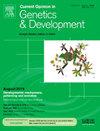人体皮肤三维有机培养物的多样性。
IF 3.6
2区 生物学
Q2 CELL BIOLOGY
引用次数: 0
摘要
最近,高保真皮肤器官组织的开发取得了长足进步,包括三维生物打印、片上皮肤系统和多能干细胞(PSCs)衍生模型等技术,复制了附肢结构和多种皮肤细胞类型。尽管出现了这些最先进的皮肤工程模型,但最初于 20 世纪 70 年代提出的人类器官型培养物(OTC)仍是组织工程领域最主要的体外培养三维皮肤模型。之所以能长期占据主导地位,是因为其成本效益高、设置简单、时间效率高,而且能忠实再现原生人体皮肤。在这篇综述中,我们系统地介绍了皮肤 OTC 模型的最新进展,旨在为今后提高体外皮肤模型的保真度和可重复性提供参考。本文章由计算机程序翻译,如有差异,请以英文原文为准。
Diversity of human skin three-dimensional organotypic cultures
Recently, significant strides have been made in the development of high-fidelity skin organoids, encompassing techniques such as 3D bioprinting, skin-on-a-chip systems, and models derived from pluripotent stem cells (PSCs), replicating appendage structures and diverse skin cell types. Despite the emergence of these state-of-the-art skin engineering models, human organotypic cultures (OTCs), initially proposed in the 1970s, continue to reign as the predominant in vitro cultured three-dimensional skin model in the field of tissue engineering. This enduring prevalence is owed to their cost-effectiveness, straight forward setup, time efficiency, and faithful representation of native human skin. In this review, we systematically delineate recent advances in skin OTC models, aiming to inform future efforts to enhance in vitro skin model fidelity and reproducibility.
求助全文
通过发布文献求助,成功后即可免费获取论文全文。
去求助
来源期刊
CiteScore
7.90
自引率
0.00%
发文量
102
审稿时长
1 months
期刊介绍:
Current Opinion in Genetics and Development aims to stimulate scientifically grounded, interdisciplinary, multi-scale debate and exchange of ideas. It contains polished, concise and timely reviews and opinions, with particular emphasis on those articles published in the past two years. In addition to describing recent trends, the authors are encouraged to give their subjective opinion of the topics discussed.
In Current Opinion in Genetics and Development we help the reader by providing in a systematic manner:
1. The views of experts on current advances in their field in a clear and readable form.
2. Evaluations of the most interesting papers, annotated by experts, from the great wealth of original publications.[...]
The subject of Genetics and Development is divided into six themed sections, each of which is reviewed once a year:
• Cancer Genomics
• Genome Architecture and Expression
• Molecular and genetic basis of disease
• Developmental mechanisms, patterning and evolution
• Cell reprogramming, regeneration and repair
• Genetics of Human Origin / Evolutionary genetics (alternate years)

 求助内容:
求助内容: 应助结果提醒方式:
应助结果提醒方式:


